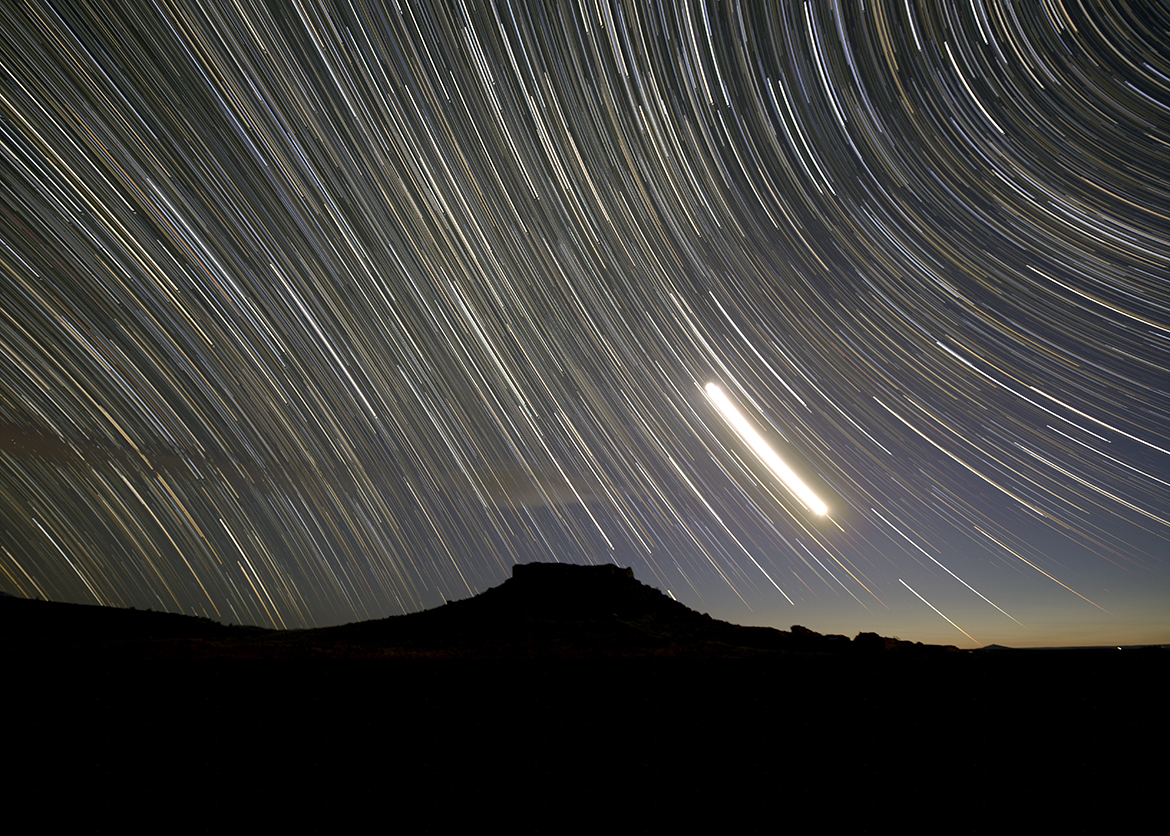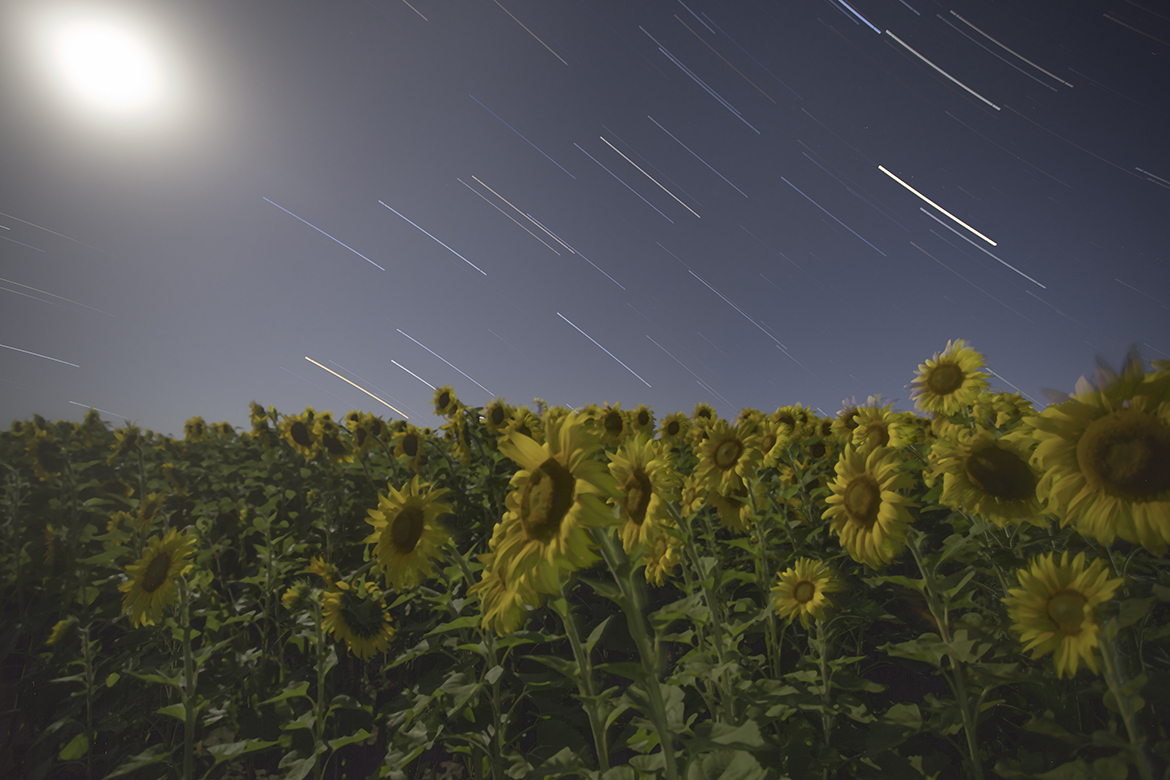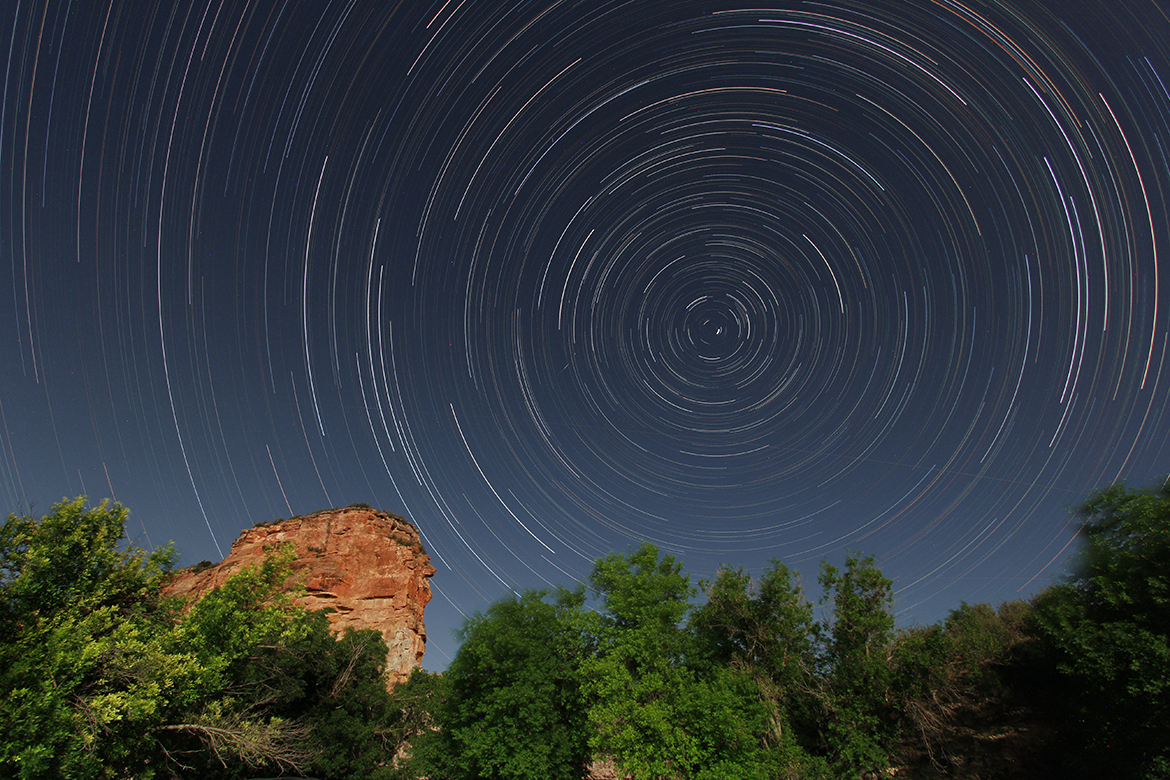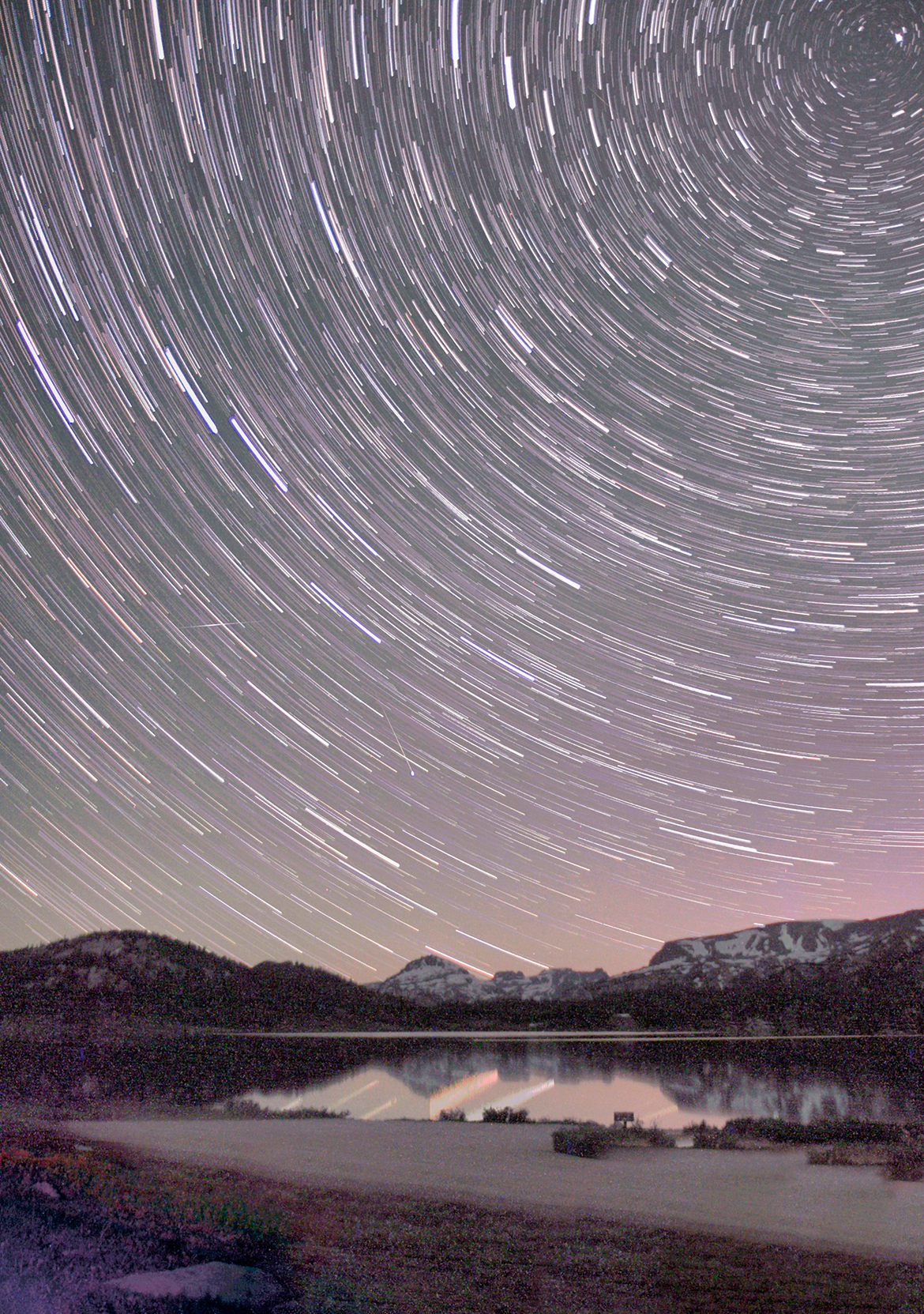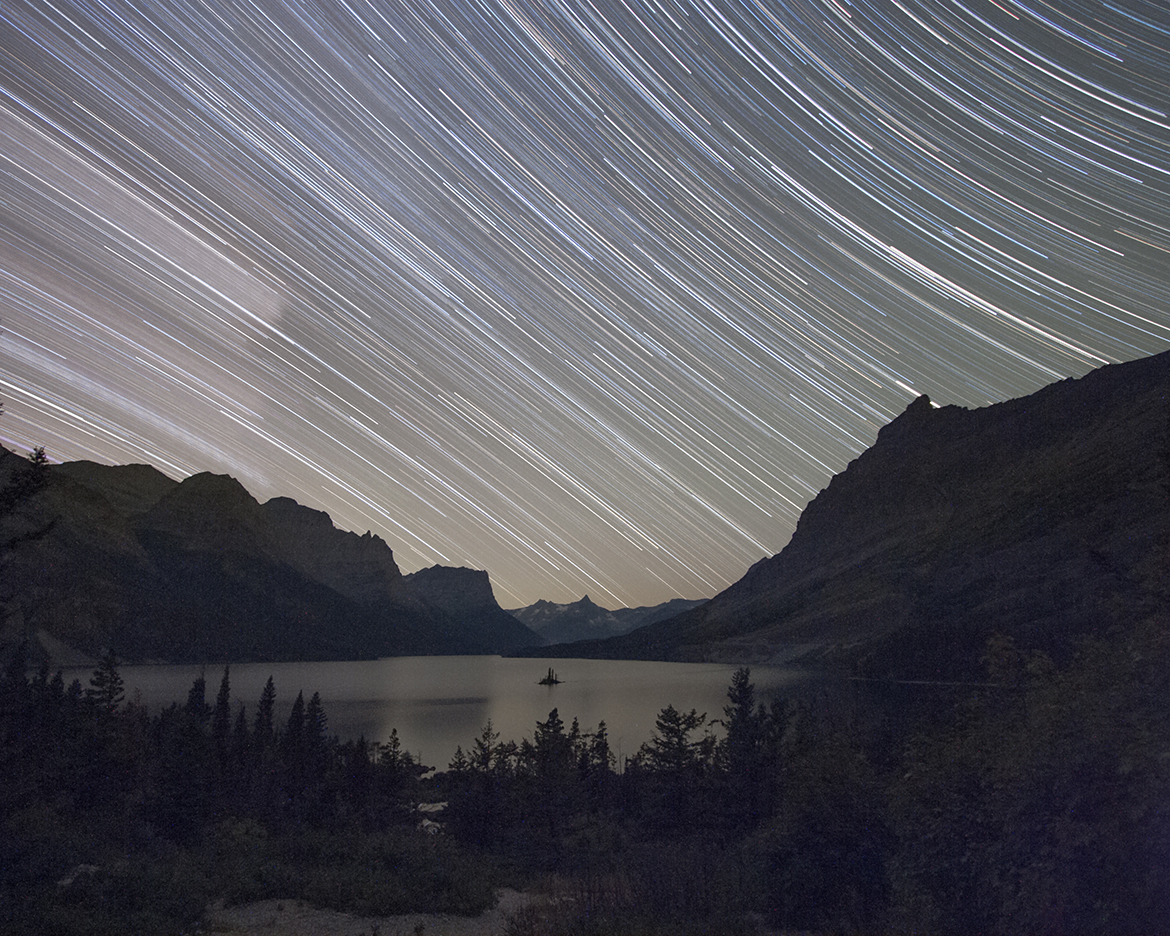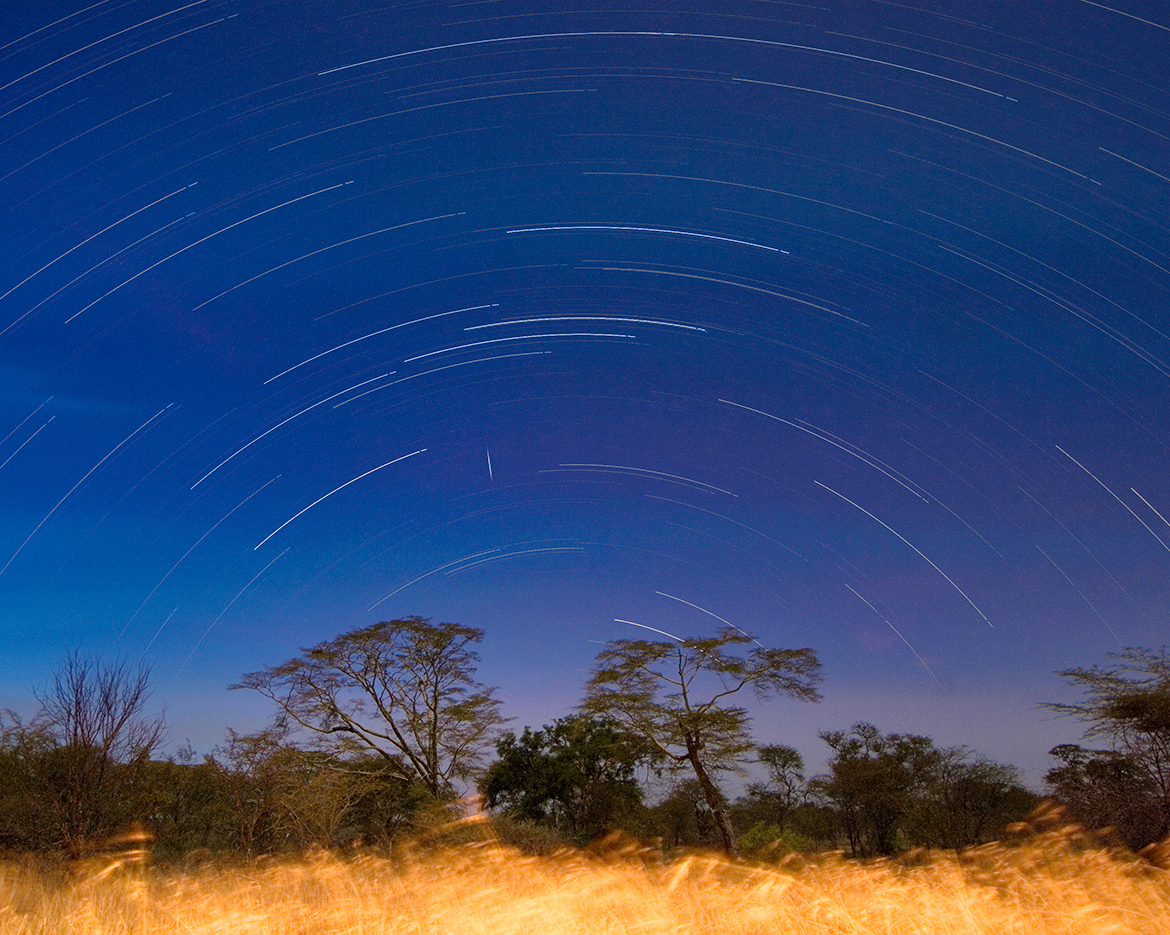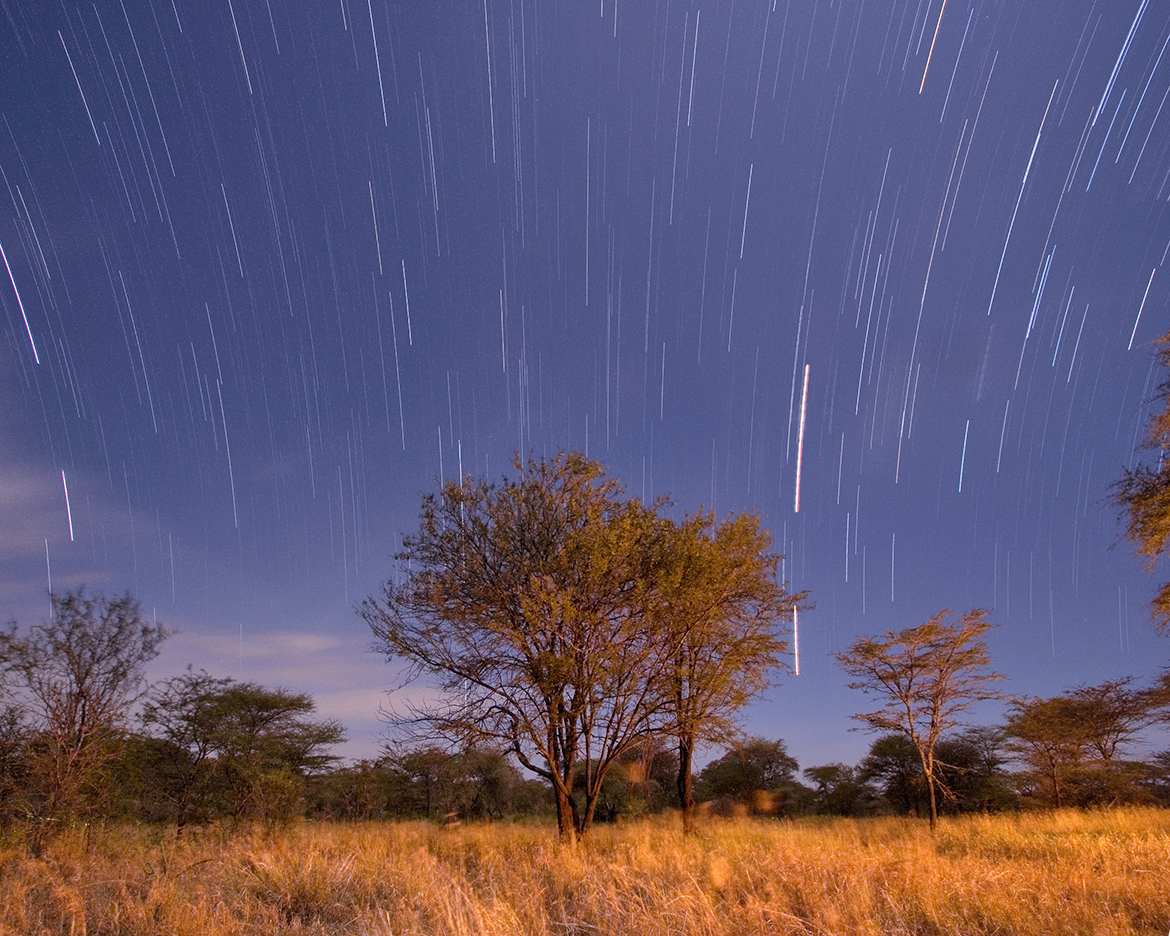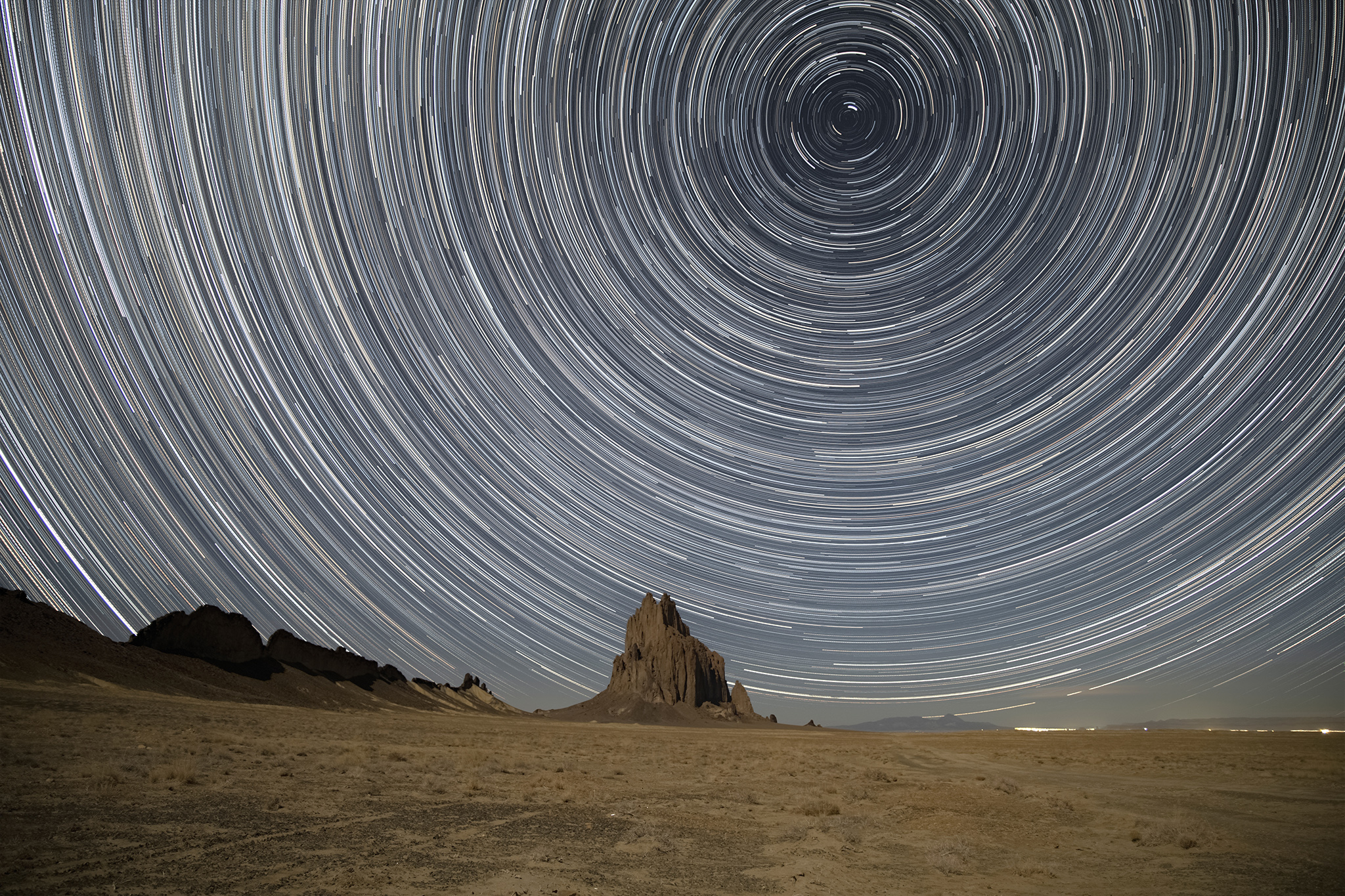
Many of my photographic ventures are purely serendipitous. Yes, it is important to be at the right place, or the right time, and sometimes both, but there are so many things that can go wrong and prevent the shot that you were planning. But there are also many things that can happen that are unexpectedly magnificent. If you have a camera ready and waiting – even for something else—you can capture the unexpected event.
This describes my attitude when setting up a camera for a long nighttime shoot. Lately, I have been exploring timelapse photography, making exposures every few seconds and then creating a motion picture (mp4 video) from them. When traveling alone with no fixed plans, I like to head to photogenic landscapes where the skies are clear. But a joint road trip itinerary with lodging reservations does not permit this flexibility, and I often encounter overcast skies. I accept this as just one of those challenges to the practitioners of this arcane hobby.
And so, when our homeward-bound trip from a Thanksgiving in Los Angeles took us through New Mexico, and the day’s route ended near Shiprock, a city named for the nearby geologic feature that the Navaho call the “Rock with Wings”, our plans shifted to take advantage of the unexpectedly clear skies. Although exhausted from a long day on the road, I left the comfort of a cozy Airbnb apartment to go set up cameras in the desert and wait in the cold for hours, hoping to capture something interesting.
Continue reading

